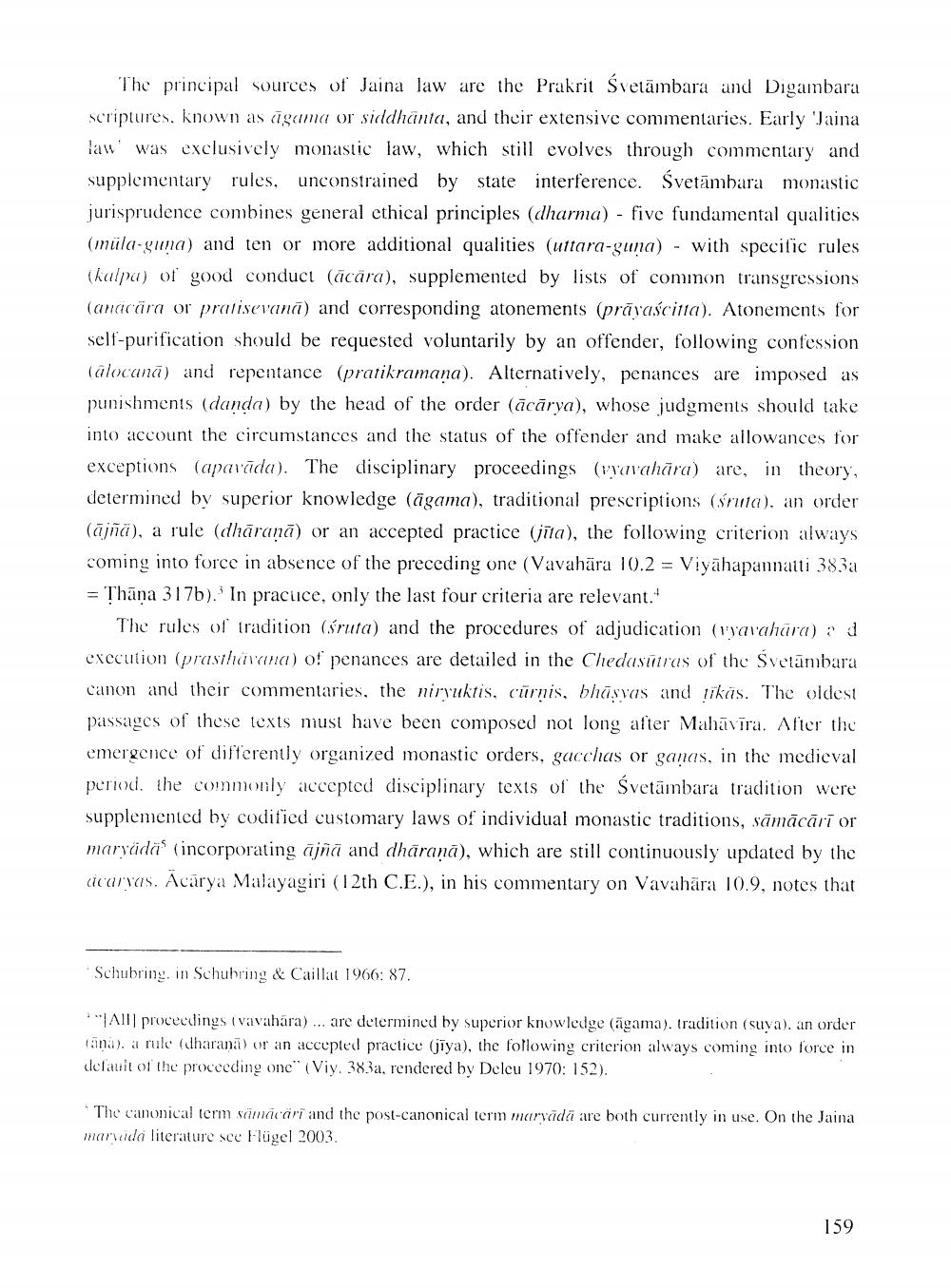________________
The principal sources of Jaina law are the Prakrit Svetämbara and Digambara scriptures, known as cīgama or siddhanta, and their extensive commentaries. Early 'Jaina law' was exclusively monastic law, which still evolves through commentary and supplementary rules, unconstrained by state interference. Svetāmbara monastic jurisprudence combines general ethical principles (dharma) - five fundamental qualities (müla-guna) and ten or more additional qualities (uttara-guna) - with specific rules (kalpa) of good conduct (ācāra), supplemented by lists of common transgressions (anacära or pralisevanā) and corresponding atonements (prāvascita). Atonements for self-purification should be requested voluntarily by an offender, following confession (alocana) and repentance (pratikramana). Alternatively, penances are imposed as punishments (danda) by the head of the order (ācārya), whose judgments should take into account the circumstances and the status of the offender and make allowances for exceptions (aparāda). The disciplinary proceedings (vvavahüra) are, in theory, determined by superior knowledge (āgama), traditional prescriptions (fruta), an order (ājna), a rule (dhāraņā) or an accepted practice (jīta), the following criterion always coming into force in absence of the preceding one (Vavahära 10.2 = Viyahapannatti 383a = Thāna 317b). In practice, only the last four criteria are relevant.
The rules of tradition (śruta) and the procedures of adjudication (yavahüra) : d execution (prastha vina) o! penances are detailed in the Chedasutras of the Svetämbara canon and their commentaries, the niryuktis, cürnis, bhāsvas and likäs. The oldest passages of these texts must have been composed not long after Mahāvīra. Aller the emergence of differently organized monastic orders, gacchas or ganas, in the medieval period. the commonly accepted disciplinary texts of the Svetämbara tradition were supplemented by codified customary laws of individual monastic traditions, sämācārī or maryadā* (incorporating ājñä and dhāranā), which are still continuously updated by the carvas. Ācārya Malayagiri (12th C.E.), in his commentary on Vavahära 10.9, notes that
Schubring. in Schuhring & Caillat 1966: 87.
* All proceedings ivavahára) ... are determined by superior knowledge (agama), tradition (suya), an order cana), a rule (dharana) or an accepted practice (jīya), the following criterion always coming into force in delauit of the proceeding one" (Viy. 383a, rendered by Deleu 1970: 152).
The canonical term sämäcari and the post-canonical term marvädä are both currently in use. On the Jaina marida literature sce Flügel 2003,
159




